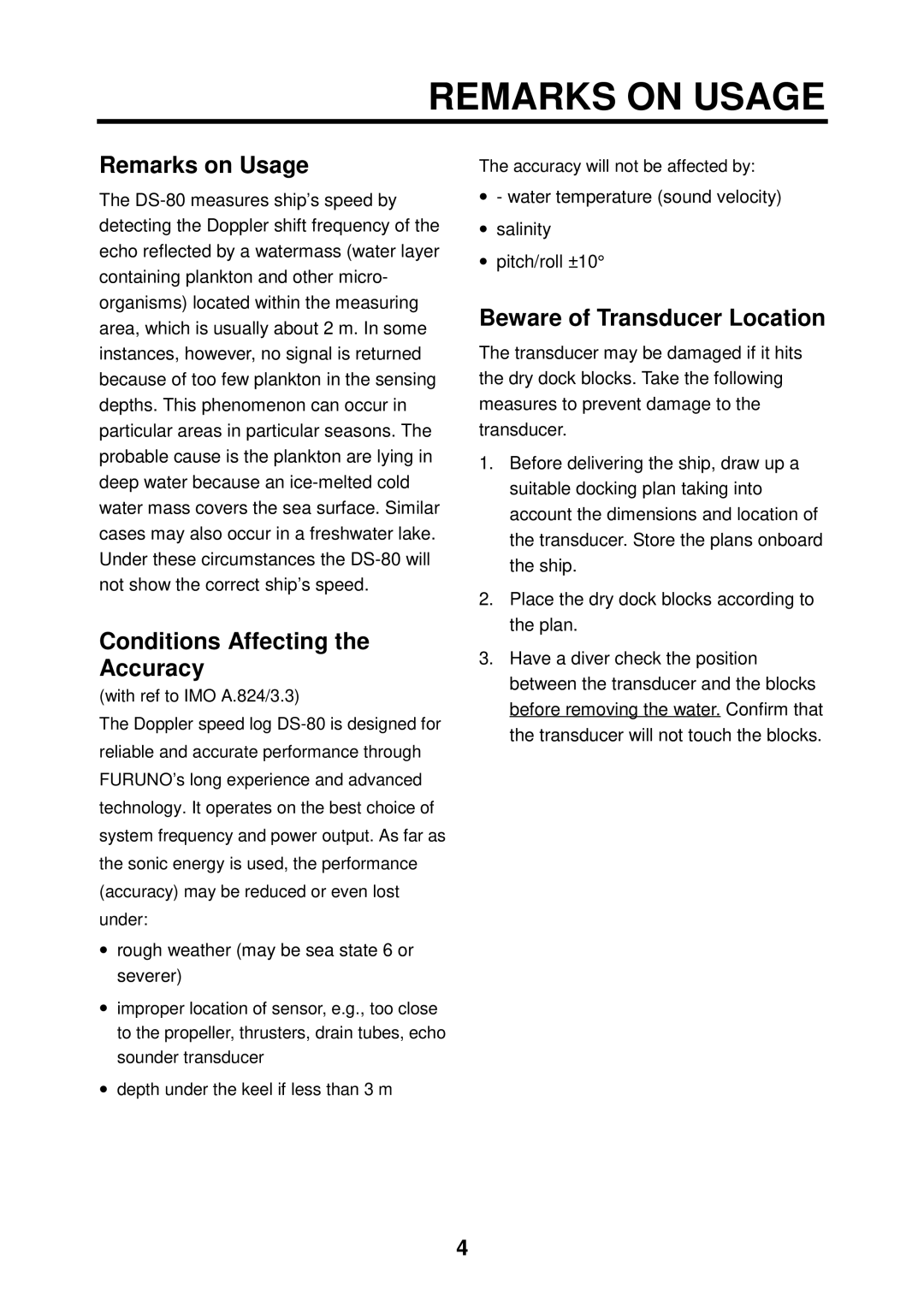REMARKS ON USAGE
Remarks on Usage
The
Conditions Affecting the Accuracy
(with ref to IMO A.824/3.3)
The Doppler speed log
•rough weather (may be sea state 6 or severer)
•improper location of sensor, e.g., too close to the propeller, thrusters, drain tubes, echo sounder transducer
•depth under the keel if less than 3 m
The accuracy will not be affected by:
•- water temperature (sound velocity)
•salinity
•pitch/roll ±10°
Beware of Transducer Location
The transducer may be damaged if it hits the dry dock blocks. Take the following measures to prevent damage to the transducer.
1.Before delivering the ship, draw up a suitable docking plan taking into account the dimensions and location of the transducer. Store the plans onboard the ship.
2.Place the dry dock blocks according to the plan.
3.Have a diver check the position between the transducer and the blocks before removing the water. Confirm that the transducer will not touch the blocks.
4
